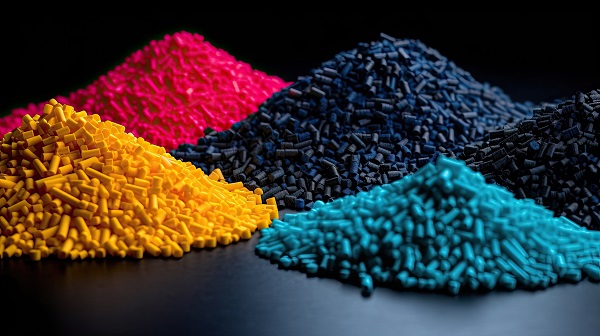In structural building components, innovation and adaptability are pivotal. As the world evolves, so do the materials we utilize in our structures, paving the way for stronger, more efficient, and sustainable building practices.
Among these innovations, thermoformed plastics are emerging as a prominent player. These plastics offer unique advantages that can significantly enhance the functionality and aesthetics of structures.
The Basics Of Thermoformed Plastics
To appreciate the impact of thermoformed plastics on structural building components, you must first understand the basics. Thermoforming is a process wherein plastic sheets are heated to a pliable forming temperature, molded to a specific shape, and then cut to produce a usable product. The benefits? They’re manifold: design flexibility, production speed, and potential cost savings.
But why Illinois? Interestingly, regions like vacuum forming Illinois have become known for their expertise and advancements. With state-of-the-art facilities and seasoned professionals, places like these serve as a testament to the growing popularity and reliance on this technology in the construction industry.
Advantages In Building Applications
Now that you’ve seen the process, let’s dive into how thermoformed plastics can revolutionize structural building components.
- Strength And Durability
Thermoformed plastics exhibit exceptional strength and durability compared to traditional materials. They are remarkably resistant to environmental elements such as moisture, UV rays, and specific chemicals. Consequently, these plastic materials can endure harsh conditions, ensuring a longer lifespan and necessitating minimal maintenance in the long run.
- Design Versatility
Thermoformed plastics offer unparalleled design versatility, allowing for the creation of complex shapes, textures, and designs that would otherwise be difficult to achieve with alternative materials. The unique molding properties of thermoformed plastics enable intricate detailing and customization, providing endless possibilities for creative and innovative designs.
- Eco-friendly Options
Thermoformed plastics provide eco-friendly options, contributing to the growing global emphasis on sustainability. They are recyclable, allowing for reuse or repurposing when they have fulfilled their intended purpose. This recyclability feature helps reduce the environmental impact of buildings by controlling the amount of waste generated and cutting down on greenhouse gas emissions. Thermoformed plastics, therefore, represent a valuable environmentally friendly alternative in modern construction.
Potential Limitations And Solutions
Every innovation has its set of challenges, and thermoformed plastics are no exception.
- Thermal Conductivity
Thermoformed plastics, while highly versatile and durable, may present thermal conductivity challenges in certain circumstances. However, their thermal performance can be optimized by incorporating them with appropriate insulating materials.
This combination helps regulate and control heat transfer, ensuring that thermoformed plastics can effectively withstand different climatic conditions and maintain an optimal thermal environment. By implementing strategic insulation measures, the thermal challenges associated with thermoformed plastics can be effectively addressed in various settings.
- Cost Implications
While the initial cost of using thermoformed plastic components may be higher than traditional materials, it is important to consider the long-term cost implications. Thermoformed plastics are known for their durability and longevity, meaning that they can withstand wear and tear over time better than some other materials. Additionally, they often require less maintenance and upkeep, reducing maintenance costs in the long run. When all these factors are considered, the overall cost-effectiveness of thermoformed plastics can outweigh the initial investment and provide favorable long-term returns for various applications.
How To Implement Thermoformed Plastics Effectively
If you’re considering integrating thermoformed plastics into your building project, here are some steps to ensure success.
- Partner With Experts
Regarding complex projects or initiatives, partnering with experts in the field can prove enormously beneficial. Collaborating with professionals, particularly those hailing from regions well-known for their expertise in the relevant domain, can provide invaluable guidance throughout the process. These experts are well-equipped to offer insights and advice on various aspects, such as design considerations, material selection, and installation techniques. By leveraging their knowledge and experience, individuals or organizations can ensure that their endeavors are carried out efficiently and effectively, ultimately leading to successful outcomes.
- Consider The Building’s Purpose
When it comes to selecting what type of thermoformed plastic to use and which fabrication techniques to employ, it is important to consider the purpose of the building. Structures designed for residential, commercial, or industrial use will have different requirements and specifications that need to be considered during the planning and execution phases.
Understanding the function of the building can help determine the most appropriate type of thermoformed plastic, the necessary thickness and strength requirements, and the most efficient manufacturing and installation techniques that should be employed.
By keeping the purpose in mind, individuals or organizations can make more informed decisions that can help to ensure that the result meets the specific needs and requirements of the structure.
- Stay Updated
In the ever-changing world of thermoformed plastics, staying updated with the latest trends and technologies is crucial. It is important to continuously monitor industry advancements to ensure that your building remains at the forefront of innovation. By keeping abreast of the latest developments, you can gain valuable insights into new materials, techniques, and technologies that can enhance your thermoformed plastic components’ performance, functionality, and sustainability. Additionally, staying updated allows you to take advantage of emerging trends and design concepts that can make your building more visually appealing and competitive in the market. By actively seeking knowledge and staying informed, you can position yourself to make informed decisions and stay ahead of the curve in the dynamic field of thermoformed plastics.
Concluding Thoughts
To wrap things up, integrating thermoformed plastics into structural building components is not just a fleeting trend – it’s a testament to where the future of construction is headed. These plastics offer a world of possibilities, from their undeniable advantages to their potential challenges. And with regions like vacuum forming Illinois leading the way, the future looks promising. Dive in, explore the potential, and transform your structures into modern marvels.
Also Read
The whitest paint is here – and it’s the coolest
Prioritise tackling toxic emissions from tyres, urge Imperial experts

